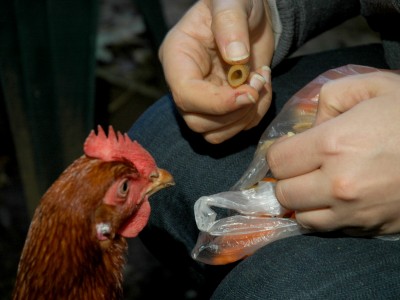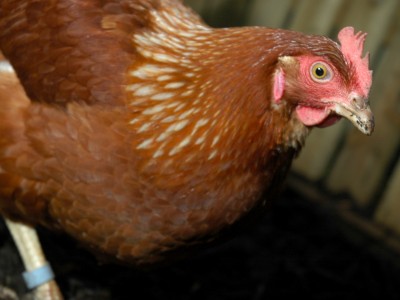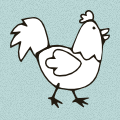Zero waste pets: the chickens
Back in July, I wrote about our efforts to make our pets zero waste, starting with the dog. Switching between food types recently has made me think about the chickens and waste.
Food
We buy layers pellets in 20kg or 25kg bags. These are usually plastic sacks, which can, for now be reused around the garden for weed barriers, storage etc. I suspect we’ll reach saturation point on that though, so we’ll have to find some other way to reuse or recycle the bags. (Some food, for example, the Golden Yolk stuff I mentioned in the consumption post, comes in thick paper sacks. That is obviously better from a zero waste point of view, although I’d worry about it in the damper months.)
Treats
At the moment, now the garden is mostly sleeping, their main treats are corn (20kg plastic sacks, which last for ages and ages) and kitchen scraps.
The latter is interesting from a zero waste point of view – they’re actually helping reduce our waste by eating scraps and leftovers. Admittedly most of the stuff they’re getting would normally go into the compost so it’s not reducing landfill, but it’s making better use of it.
Other consumables
We have numerous powders for them – eg, red mite powder, louse powder and poultry spice – which come in cardboard tubes, with either metal or plastic tops and bottoms. We haven’t exactly raced through them but those bits of metal/plastic are going to be difficult to recycle when we do finish them.
We also buy in mixed grit – a mix of small hard stones (to fill their crop and aid digestion) and soluble shell (to boost their calcium levels). Our first bag came in brown paper, then I had some delivered and that was in a plastic tub – a very reusable resealable plastic tub but I think I’ll seek out brown paper bags of it in the future.
Straw and wood shavings come in plastic wrapped mini-bales/bales. The mini-bales of straw has lasted about four months, I imagine the bale of wood-shavings will last about six, so it’s not like we’re going through a lot of them. If I was using them quicker, I’d consider buying unwrapped bales of straw but I think it’s probably better for us to have the protection from the plastic – to stop it from getting damp and the straw being wasted that way.
Housing
Not really waste but we could have reduced their footprint in the first place by building our own coop rather than buying a purpose-built one. We had reasons for this – mostly connected to us being first timers – and I think if we need to replace it or expand it, we’ll do the building ourselves, not buying a bigger one. Ditto the run (which was made half’n’half out of scrap & new wood & wire). Any resources that are left over will go into our DIY/garden resource piles or, in the case of burnable wood, our kindling supply.
Their automatic pop hole door is a potential waste worry – but it has a three year guarantee and John thinks he would be able to fix it if it went wrong anyway. If we changed our mind about having chickens in the future, I’m sure I’d be able to find someone who would take it off our hands.
Toys/Activities
The chickens have a number of perches in their run – made from branches from the tree we cut down at the start of the year. They also have a couple of patio chairs and an old mirror – both of which John’s dad acquired from the tip. Again, they’re actually helping reuse things rather than generating new waste.
Waste
In the coop, they poop onto straw (the naughty girl still sleeping in a nest box) or onto wood shavings (under the perches). I line the bottom of the coop with yoinked-from-John’s-dad’s-recycling-bin newspapers and put the shavings on that – when I’m cleaning it out, I just roll the newspaper into shaving & poo sausages and throw it in the compost heap. Easy peasy. The straw from the nest boxes goes into the compost heap too.
Outside in the run, we have a deep litter type arrangement using wood chips. At the moment, it’s all composting down nicely, not stinky or icky and fine to be left in place, but at some point we might decide to dig it out and start again with fresh wood chips rather than just topping them up. That’ll end up in the compost heap.
Other output
We manage to get through all their eggs one way or another – fresh ones are eaten or given away, slightly older ones are hard-boiled (either to be eaten there and then or pickled), cracked ones are either used by us as soon as they’re picked up/broken or go to the dog as a treat while they’re still fresh.
The shells are baked and crushed, then fed back to the chickens in their grit hopper – putting the calcium back into their food chain – so that stops some more waste from our kitchen (although we tended to reuse them in the garden/compost them anyway).
And another not zero waste but minus waste thing – we collect old egg boxes from friends and family to use for when we’re giving away eggs. Most have been used several times now and they’re all cardboard so if they do reach end of life, they can be composted.
Overview
So overall, they’re pretty low waste: in several ways, they reduce our waste – leftovers, random things for run furniture and egg shells – and the rest going to compost. I’ll try to work on reducing the plastic feed sacks & bale wrapping and the occasion bit of plastic in the “other consumables” section – while keeping in mind the potential waste that plastic wrapping will help avoid.






